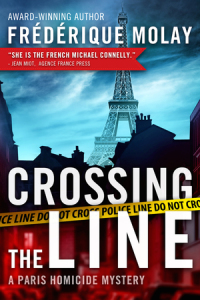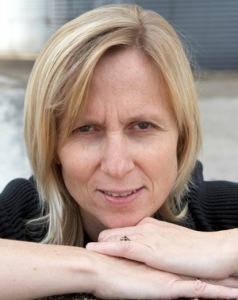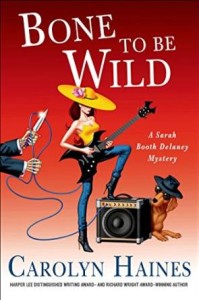Thanks for French writer Frédérique Molay for guest posting today. A quick note that I’m posting on the Writers on the Storm blog today on Making Our Content Work Harder for Us. Thanks!
by Frédérique Molay 
So just how do you write a good mystery? Well, I’m going to have to disappoint. I don’t have a secret recipe—for mystery writing, that is. I do have one to make delicious cookies, hot from the oven, but my repertoire doesn’t have step-by-step instructions for writing a good novel.
There is some good news though: it is possible to list some of the ingredients that belong in a good mystery. Just explore Raymond Chandler’s “10 Commandments for the Detective Novel,” or S.S. Van Dine’s “20 Rules for Writing Detective Stories,” published by American Magazine in 1928. That said, don’t be fooled, mystery is a genre that appears simple, but hides complexity.
To start, of course, all you need is a detail. A face, an anecdote, a press clipping or a work of art will do. Inspiration can come from any number of places. Anything could trigger a story, which can then unfold, like a movie in your mind.
Once you have a detail, you need to build the plot. In mysteries, there is always a crime—a murder, kidnapping, or heist, or perhaps a coded message or disappearance. It is important to control the story line and the clues that are revealed, because nothing can be left to chance. The strings all need to be connected, and they need to be credible. Van Dine’s rule number 1 reads, “1. The reader must have equal opportunity with the detective for solving the mystery. All clues must be plainly stated and described.” That should not keep both reader and detective from surprising each other.
Mysteries also need charismatic characters. They need to make the reader feel fear, intrigue, and suspense. They need a fast pace, alternating dialogue, description and actions. All these elements help keep the reader turning the pages, which is the goal.
I’d also say that mysteries require a two-fold personality—writers need to dream and be creative, all the while honing mathematical precision. You need to have your feet on the ground and your head in the clouds—in dark, stormy clouds. This genre does more than entertain. It explores our deepest fears and anxieties. It distracts readers with stories about life’s troubles waters, translating the scandals we all experience everyday. Mysteries are a pulse-throbbing fictional investigation into the truths of human life.
Writing has always been a passion for Frédérique Molay, author of the international bestseller The 7th Woman. She graduated from France’s prestigious Science Po and began her career in politics and the French administration. She worked as Chief of Staff for the Deputy Mayor of Saint-Germain-en-Laye, and then was elected to the local government in Saône-et-Loire. Meanwhile, she spent her nights pursing a passion for writing she had nourished since she wrote her first novel at the age of eleven. AfterThe 7th Woman took France by storm, Frédérique Molay dedicated her life to writing and raising her three children. She has five books to her name, with three in the
Paris Homicide series.
Crossing the Line released in bookstores on September 23. In it Chief of Police Nico Sirsky returns to work after recovering from a gunshot wound. He’s in love and rearing to go. His first day back has him overseeing a jewel heist sting and taking on an odd investigation. Just how far can despair push a man? How clear is the line between good and evil?






